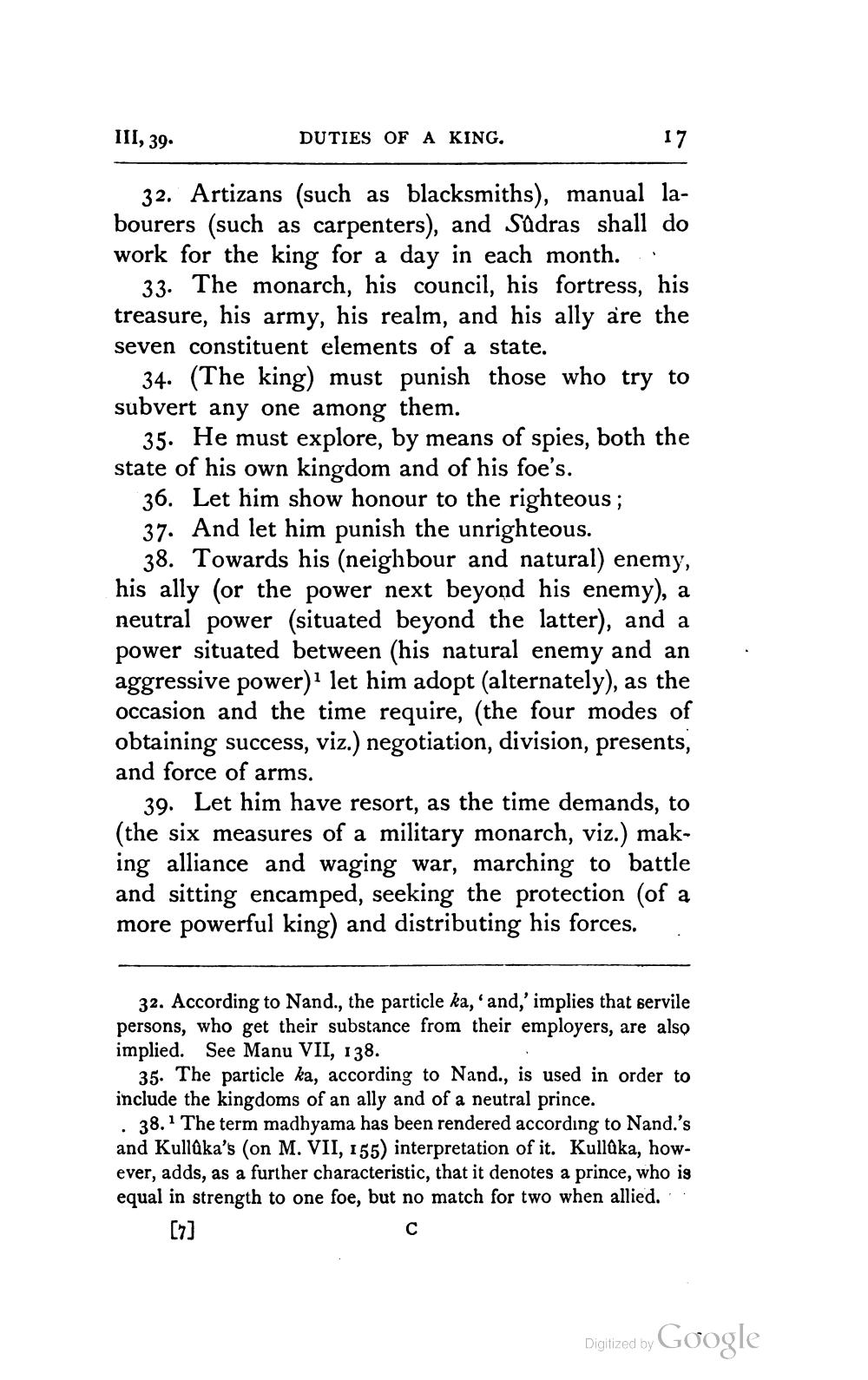________________
III, 39.
DUTIES OF A KING.
17
32. Artizans (such as blacksmiths), manual labourers (such as carpenters), and Sadras shall do work for the king for a day in each month...
33. The monarch, his council, his fortress, his treasure, his army, his realm, and his ally are the seven constituent elements of a state.
34. (The king) must punish those who try to subvert any one among them.
35. He must explore, by means of spies, both the state of his own kingdom and of his foe's.
36. Let him show honour to the righteous; 37. And let him punish the unrighteous.
38. Towards his (neighbour and natural) enemy, his ally (or the power next beyond his enemy), a neutral power (situated beyond the latter), and a power situated between (his natural enemy and an aggressive power)1 let him adopt (alternately), as the occasion and the time require, (the four modes of obtaining success, viz.) negotiation, division, presents, and force of arms.
39. Let him have resort, as the time demands, to (the six measures of a military monarch, viz.) making alliance and waging war, marching to battle and sitting encamped, seeking the protection (of a more powerful king) and distributing his forces.
32. According to Nand., the particle ka, 'and,' implies that servile persons, who get their substance from their employers, are also implied. See Manu VII, 138.
35. The particle ka, according to Nand., is used in order to include the kingdoms of an ally and of a neutral prince. . 38. The term madhyama has been rendered according to Nand.'s and Kullûka's (on M. VII, 155) interpretation of it. Kullûka, however, adds, as a further characteristic, that it denotes a prince, who is equal in strength to one foe, but no match for two when allied.
[7]
Digitized by Google




